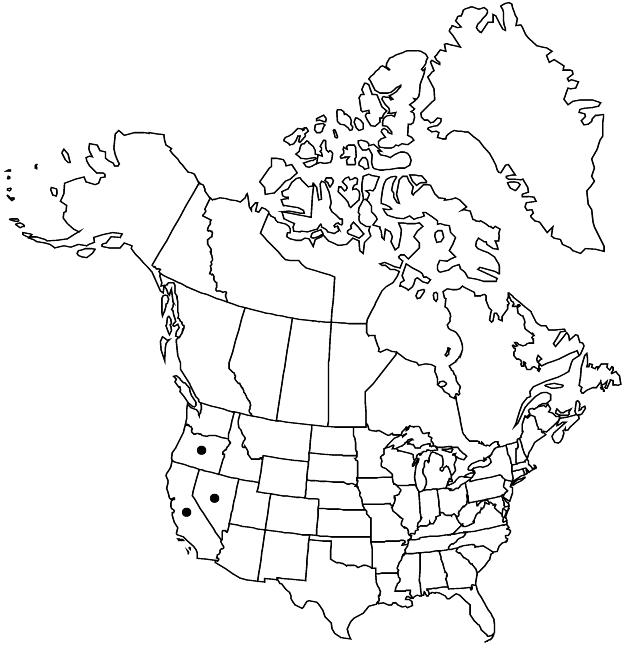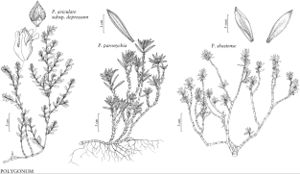Polygonum shastense
Proc. Amer. Acad. Arts 8: 400. 1872.
Subshrubs. Stems prostrate to ascending, brown, branched, gnarled, not wiry, 5–40 cm, glabrous. Leaves ± uniformly distributed, articulated to ocreae, basal leaves caducous or persistent, distal leaves not reduced in size; ocrea 3–5 mm, glabrous, proximal part cylindric, distal part membranous, deciduous with leaves; petiole 0–0.5 mm; blade 1-veined, without pleats, lanceolate to elliptic, 5–25 × 2–5 mm, coriaceous, margins revolute, smooth, apex acute. Inflorescences axillary; cymes in distal axils, 2–6-flowered. Pedicels enclosed in or slightly exserted from ocreae, erect, 2–4 mm. Flowers open or semi-open; perianth 5–9 mm; tube 7–15% of perianth length, tepals partially overlapping, uniformly pink or white, petaloid, ovate to ovate-round, apex rounded; midveins with numerous branched lateral veins; stamens 8. Achenes enclosed in or slightly exserted from perianth, brown, narrowly ovate, 3–4 mm, faces subequal, shiny, smooth.
Phenology: Flowering Jul–Sep.
Habitat: Rocky or gravelly slopes
Elevation: 2100-3400 m
Distribution

Calif., Nev., Oreg.
Discussion
Polygonum shastense may be cultivated in rock gardens in rock crevices with favorable water regime and shaded in summer.
Selected References
None.
